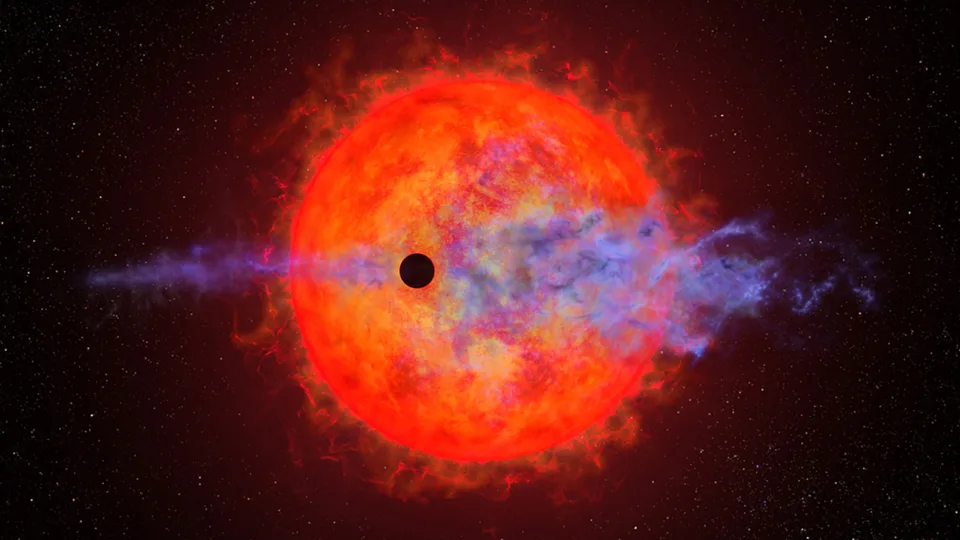
Hubble Space Telescope Captures Dramatic Atmospheric Changes in Nearby Exoplanet
The Hubble Space Telescope has recently made a surprising observation. It involves a nearby planetary system, AU Microscopii, or AU Mic. This red dwarf star is situated 32 light-years away from our planet, Earth. AU Mic has a close planet, AU Mic b, whose atmosphere is undergoing dramatic changes. These changes are caused by the star’s energetic outbursts. Interestingly, these outbursts are eroding the planet’s atmosphere. This is a phenomenon that wasn’t observed during Hubble’s previous visit to this system.
The AU Microscopii System
AU Mic is a red dwarf star, a type commonly found in the Milky Way. Interestingly, it hosts one of the youngest planetary systems we’ve ever observed. This star is less than 100 million years old, making it much younger than our 4.6-billion-year-old sun. NASA’s now-retired Spitzer Space Telescope and the Transiting Exoplanet Survey Satellite made this discovery in 2020. They noticed a slight dip in the star’s brightness. This dip revealed the presence of a gaseous world orbiting in front of the star.
The Unexpected Observation
The exoplanet, AU Mic b, completes its orbit in 8.46 days. At first, this seemed like a typical orbit. However, when the Hubble Space Telescope returned to the system after 18 months, it made a surprising discovery. The telescope found that AU Mic b was withstanding the intense radiation from its star. This radiation was so powerful that it was causing the planet’s hydrogen atmosphere to evaporate. This critical finding opens up new avenues for us to study the extreme interactions between a star and its planet.
The Impact of Stellar Flares
Red dwarf stars, like AU Mic, are known to release strong stellar flares for much longer than sun-like stars. These damaging waves of radiation are impacting AU Mic b, which is located just 6 million miles from the star. As the planet is blasted by radiation, its atmosphere heats to the point that it escapes the planet’s gravity and expands into space.
The Future of Planets Orbiting Red Dwarf Stars
Red dwarf stars, such as AU Mic, have a reputation for emitting potent stellar flares. These flares persist for a duration far exceeding those from sun-like stars. AU Mic b, situated a mere 6 million miles from its star, faces the brunt of these destructive radiation waves. The radiation bombardment heats up the planet’s atmosphere to such an extent that it overcomes the planet’s gravitational pull. Consequently, the heated atmosphere expands and disperses into space.
In summary,the Hubble Space Telescope’s observation of AU Mic b provides a unique opportunity to study the effects of a star’s radiation on its planets. This research could help us understand the potential for life on planets orbiting red dwarf stars. As we continue to explore the universe, discoveries like these remind us of the dynamic and ever-changing nature of space.


